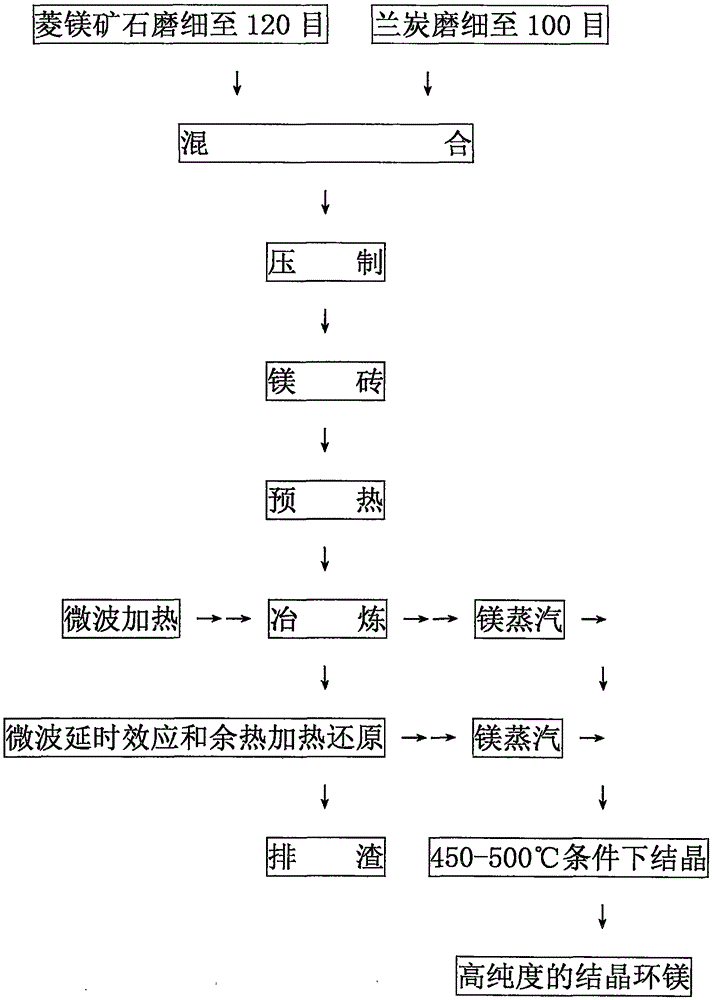Magnesium smelting process with microwave carbon method
A technology of magnesium smelting and carbon method, applied in the field of metallurgy and microwave carbon method magnesium smelting process, can solve the problems of short equipment life, high consumption of reducing agent, small production capacity, etc., and achieve the effect of fast heating speed
- Summary
- Abstract
- Description
- Claims
- Application Information
AI Technical Summary
Problems solved by technology
Method used
Image
Examples
Embodiment Construction
[0042] The present invention will be described in detail below in conjunction with the accompanying drawings. As shown in the accompanying drawings:
[0043] A kind of microwave carbon method magnesium smelting process:
[0044] ①. Preparation of magnesia bricks: Magnesium smelting raw materials are composed of magnesite ore with a magnesium content of 41-47% and semi-coke with a carbon content of 85-87%. Charcoal is mixed in a ratio of 1:0.7, and pressed under a pressure of 25-30Mpa to grow into a magnesia brick of 300mm, 100mm high, 200mm wide at one end, and 150mm wide at the other end;
[0045] ② Preheating of magnesia bricks: preheat magnesia bricks at a temperature of 600-650°C for 1 hour, and use the coking property of coal to bond the magnesia bricks as reduction materials together to avoid spraying during the reduction process of magnesia smelting. Material phenomenon;
[0046] ③. Smelting of magnesia bricks: when the preheated magnesia bricks maintained at a tempe...
PUM
 Login to View More
Login to View More Abstract
Description
Claims
Application Information
 Login to View More
Login to View More - R&D
- Intellectual Property
- Life Sciences
- Materials
- Tech Scout
- Unparalleled Data Quality
- Higher Quality Content
- 60% Fewer Hallucinations
Browse by: Latest US Patents, China's latest patents, Technical Efficacy Thesaurus, Application Domain, Technology Topic, Popular Technical Reports.
© 2025 PatSnap. All rights reserved.Legal|Privacy policy|Modern Slavery Act Transparency Statement|Sitemap|About US| Contact US: help@patsnap.com

